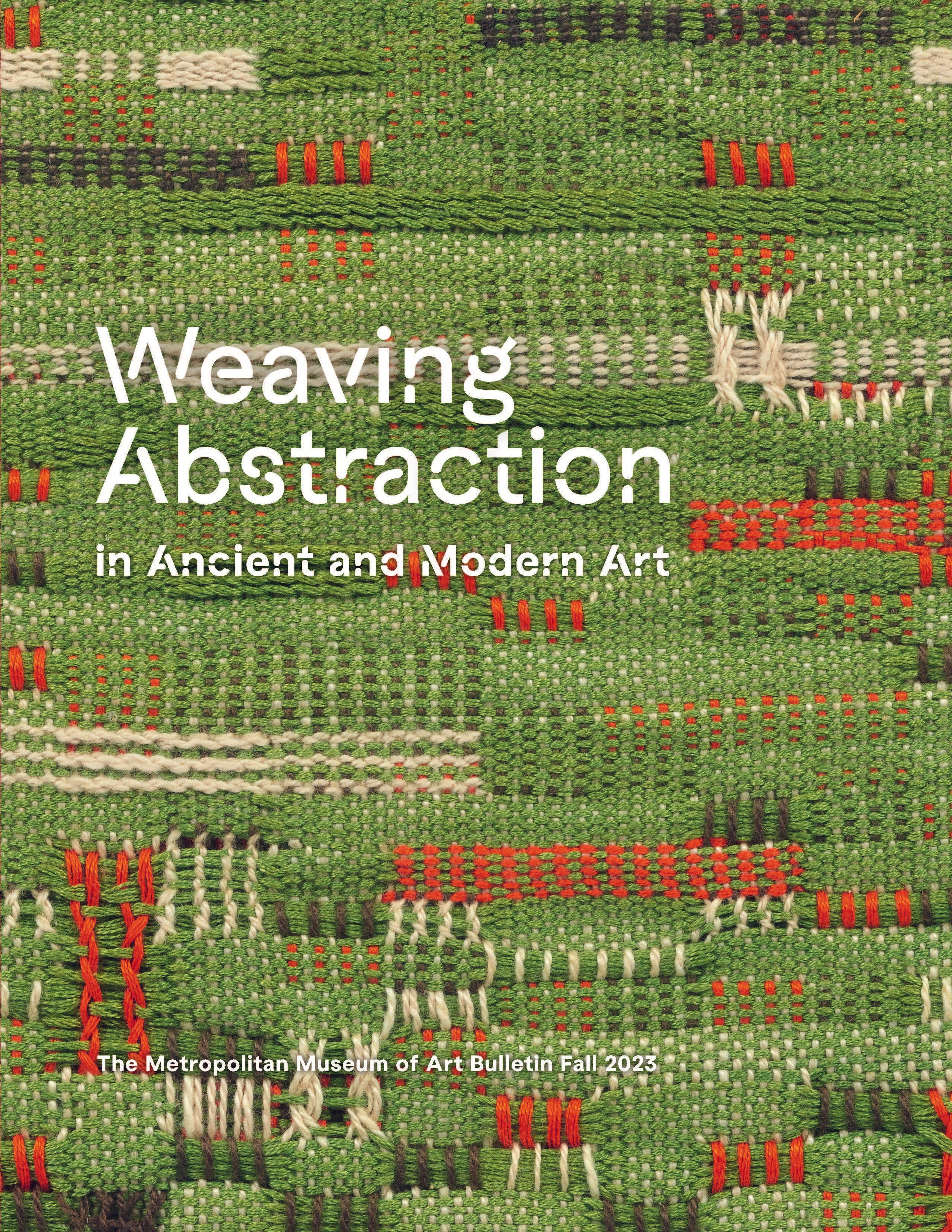Hanging
From 1200 to 1500 CE, the coastal valleys of northern Peru were dominated by the Chimú kingdom. The Chimú, whose capital was the present-day site of Chan Chan, outside of Trujillo, produced superb luxury goods in silver, gold, feathers, wood, and textiles. This hanging, perhaps intended to adorn the adobe walls of high-status buildings, is similar in construction and imagery to other hangings and garments in The Met’s collection, such as accession number 1979.206.601, and the Textile Museum (91.849, .850, .854), all of which may have been made for a single individual or place. The imagery on this group of textiles is characterized by diagonal bands of repeating figures. In this example, rows of interlocking motifs, including monkeys in tan, dark brown, and white, are flanked by bands of white, turquoise and tan geometric patterns.
References and Further Reading
Lavalle, José Antonio de, Arte y tesoros del Perú. Chimú. Lima, Peru: Banco de Crédito del Perú en la Cultura, 1988, pp. 138-249.
Oakland, Amy. "Max Uhle’s Field Notes and Textile Collections from Chimu Capac, Supe Valley, Peru; Style and Cultural Affiliation During the Early and Late Middle Horizon." Ñawpa Pacha, 40, (2020), pp. 175-222.
Pillsbury, Joanne. "Reading Art without Writing: Interpreting Chimú Architectural Sculpture," in Dialogues in Art History, from Mesopotamian to Modern: Readings for a New Century, edited by Elizabeth Cropper, pp. 72-89. Studies in the History of Art 74, Center for Advanced Study in the Visual Arts Symposium Papers LI. Washington D.C.: National Gallery of Art, Distributed by Yale University Press, 2009.
Rowe, Ann Pollard. Costumes and Featherwork of the Lords of Chimor: Textiles from Peru’s North Coast. Washington, DC: The Textile Museum, 1984.
Rowe, Ann Pollard. "Chimu Textiles." In Andean Art at Dumbarton Oaks. edited by Elizabeth Hill Boone, Vol. 2, pp. 425-435. Washington D.C.: Dumbarton Oaks Research Library and Collection, 1996.
Rowe, Ann Pollard. Warp-patterned Weaves of the Andes. Washington, DC: The Textile Museum. 1977, pp. 32-33.
References and Further Reading
Lavalle, José Antonio de, Arte y tesoros del Perú. Chimú. Lima, Peru: Banco de Crédito del Perú en la Cultura, 1988, pp. 138-249.
Oakland, Amy. "Max Uhle’s Field Notes and Textile Collections from Chimu Capac, Supe Valley, Peru; Style and Cultural Affiliation During the Early and Late Middle Horizon." Ñawpa Pacha, 40, (2020), pp. 175-222.
Pillsbury, Joanne. "Reading Art without Writing: Interpreting Chimú Architectural Sculpture," in Dialogues in Art History, from Mesopotamian to Modern: Readings for a New Century, edited by Elizabeth Cropper, pp. 72-89. Studies in the History of Art 74, Center for Advanced Study in the Visual Arts Symposium Papers LI. Washington D.C.: National Gallery of Art, Distributed by Yale University Press, 2009.
Rowe, Ann Pollard. Costumes and Featherwork of the Lords of Chimor: Textiles from Peru’s North Coast. Washington, DC: The Textile Museum, 1984.
Rowe, Ann Pollard. "Chimu Textiles." In Andean Art at Dumbarton Oaks. edited by Elizabeth Hill Boone, Vol. 2, pp. 425-435. Washington D.C.: Dumbarton Oaks Research Library and Collection, 1996.
Rowe, Ann Pollard. Warp-patterned Weaves of the Andes. Washington, DC: The Textile Museum. 1977, pp. 32-33.
Artwork Details
- Title:Hanging
- Artist:Chimú artist(s)
- Date:12th–15th century
- Geography:Peru
- Culture:Chimú
- Medium:Cotton
- Dimensions:H. 61 x W. 79 in. (154.9 x 201 cm)
- Classification:Textiles-Woven
- Credit Line:Gift of Jacob and Bronka Weintraub, 1983
- Object Number:1983.491.1
- Curatorial Department: The Michael C. Rockefeller Wing
More Artwork
Research Resources
The Met provides unparalleled resources for research and welcomes an international community of students and scholars. The Met's Open Access API is where creators and researchers can connect to the The Met collection. Open Access data and public domain images are available for unrestricted commercial and noncommercial use without permission or fee.
To request images under copyright and other restrictions, please use this Image Request form.
Feedback
We continue to research and examine historical and cultural context for objects in The Met collection. If you have comments or questions about this object record, please contact us using the form below. The Museum looks forward to receiving your comments.
